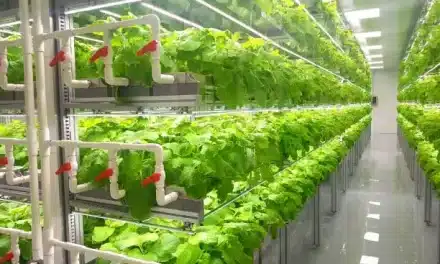Shifting agriculture is a traditional farming practice that involves cultivating land for a short period before abandoning it to allow vegetation to regrow. This method, also known as slash-and-burn farming, has been used for centuries in various parts of the world.
The practice of shifting cultivation is significant not only for its historical importance but also for its continued use in modern times. It represents a form of rotational agriculture that can have various benefits and drawbacks.
Understanding the definition, types, and implications of shifting agriculture is crucial for assessing its role in contemporary farming and its potential for sustainable land use.
Key Takeaways
- Shifting agriculture is a traditional farming method involving short-term land cultivation.
- It is also known as slash-and-burn farming or swidden agriculture.
- This practice allows for land recovery through natural regrowth after abandonment.
- Shifting cultivation represents a form of rotational agriculture.
- Understanding its benefits and drawbacks is essential for evaluating its sustainability.
What Is Shifting Agriculture?
The practice of shifting agriculture is deeply rooted in the history of various societies, particularly in tropical regions. This traditional farming method involves clearing a piece of land, cultivating it for a few seasons, and then abandoning it to allow natural vegetation to regrow.
Definition and Core Principles
Shifting agriculture, also known as shifting cultivation, is characterized by its cyclical pattern of land use. The core principle revolves around maintaining soil fertility by allowing land to lie fallow, thereby reducing the need for external fertilizers. This method is integral to traditional farming practices and is closely linked to agroforestry, as it involves managing a diverse range of crops and sometimes integrating trees into the cultivation cycle.
The process begins with the selection of a suitable plot of land, typically in forested areas. The vegetation is cleared, often using slash-and-burn techniques, to prepare the land for cultivation. Crops are then grown for a few seasons until the soil’s fertility begins to decline. At this point, the land is left to fallow, and a new plot is cleared to continue the cycle.
Historical Development and Cultural Significance
Shifting agriculture has been practiced for centuries across various parts of the world, including Southeast Asia, South America, and Africa. It is not just an agricultural practice but is deeply intertwined with the cultural and social fabric of the communities that practice it. Many indigenous cultures have developed complex systems of knowledge and rituals around shifting cultivation, making it a vital part of their identity and livelihood.
The historical development of shifting agriculture is closely tied to the ecological conditions of the regions where it is practiced. In tropical areas, where soils are often nutrient-poor, shifting cultivation provides a sustainable way to manage land without depleting its resources. This practice has allowed communities to thrive in harmony with their environment for generations.
The Process of Shifting Agriculture

Understanding the process of shifting agriculture requires examining the initial site selection and subsequent land preparation techniques. This agricultural practice is complex and involves several key steps that are crucial for its success.
Site Selection Criteria
The first step in shifting agriculture is selecting an appropriate site. The criteria for site selection include soil fertility, accessibility to water, and the presence of certain vegetation that indicates soil quality. Farmers often look for areas with rich biodiversity as it suggests fertile land.
“The choice of land is critical in shifting agriculture,” notes an agricultural expert. “Farmers must assess the land’s potential for supporting crops without degrading the soil.” This assessment is crucial for the long-term sustainability of the agricultural practice.
Land Clearing Methods
Once a site is selected, the next step is clearing the land. This involves cutting down trees and removing vegetation. The slash-and-burn method is commonly used, where vegetation is cut and then burned to clear the land and enrich the soil with nutrients.
Land clearing is a labor-intensive process that requires careful planning. The use of traditional tools, such as machetes and axes, is prevalent in many communities practicing shifting agriculture.
Burning Techniques and Timing
Burning is a critical step in the land clearing process. It not only clears the land but also adds nutrients to the soil. However, the timing and technique of burning are crucial to prevent uncontrolled forest fires. Farmers typically burn the cleared vegetation during the dry season, ensuring that the fire is controlled and the ashes contribute to soil fertility.
The process of shifting agriculture is deeply intertwined with the local ecosystem. As one farmer noted, “The land provides for us, and we must ensure that we give back to the land.” This reciprocal relationship is at the heart of sustainable shifting agriculture practices.
Types of Shifting Agriculture Systems Worldwide
Different regions have developed unique shifting agriculture practices, shaped by their specific environmental and socio-cultural contexts. These diverse systems have been adapted to local conditions, ensuring their sustainability and effectiveness in various parts of the world.
Swidden Agriculture in Southeast Asia
Swidden agriculture is a prevalent form of shifting cultivation in Southeast Asia, particularly in countries like Indonesia and Malaysia. This practice involves clearing land through burning, followed by crop rotation and fallow periods. Key characteristics include:
- Use of fire for land clearing
- Crop diversity, including rice and vegetables
- Short-term cultivation cycles
Slash-and-Burn Practices in South America
In South America, particularly in the Amazon rainforest, slash-and-burn practices are employed by indigenous communities. This method involves cutting down vegetation and then burning it to create fertile soil for planting. Notable aspects include:
- Clearing of primary forest for agriculture
- Use of traditional knowledge for crop selection
- Integration with forest regeneration cycles
African Shifting Cultivation Systems
African shifting cultivation systems vary across the continent, with practices adapted to different ecological zones. In West Africa, for example, farmers practice a form of shifting agriculture that involves rotating crops and allowing land to fallow. Key features include:
- Diverse crop selection, including yams and maize
- Integration with agroforestry practices
- Community-based land management
Jhum Farming in India
Jhum farming, also known as “jhumming,” is a traditional form of shifting agriculture practiced in the northeastern states of India. This practice involves clearing forest land by burning, followed by cultivation of crops like rice and maize. Important aspects include:
- Use of forest resources for agriculture
- Crop rotation and mixed cropping practices
- Traditional knowledge transmission among communities
These diverse shifting agriculture systems highlight the adaptability and resilience of farming communities worldwide. Understanding these practices is crucial for developing sustainable land management strategies that respect local traditions and environmental conditions.
How to Plan Your Shifting Agriculture System
To implement a sustainable shifting agriculture system, one must start with thorough planning. This involves understanding the land, the crops to be planted, and the rotation cycles that will ensure soil fertility and minimize environmental degradation.
Assessing Land Suitability
The first step in planning a shifting agriculture system is assessing the suitability of the land. This involves evaluating the soil type, topography, and climate of the area. Soil testing is crucial to determine its nutrient content and pH level. The topography should be assessed to ensure it is not prone to erosion. Climate data will help in choosing crops that are suitable for the local weather conditions.
Planning Crop Rotation Cycles
Crop rotation is a critical component of shifting agriculture. It involves planning which crops to plant, in which sequence, and how to rotate them to maintain soil fertility. Nitrogen-fixing crops like legumes can be alternated with cereals to enhance soil nutrients. The rotation cycle should also consider the growth periods of different crops to ensure continuous yield without depleting the soil.
- Determine the crops to be grown based on climate and soil suitability.
- Plan the rotation sequence to maintain soil fertility.
- Include nitrogen-fixing crops in the rotation cycle.
Establishing Fallow Management Protocols
Fallow management is essential for the sustainability of shifting agriculture. It involves allowing the land to rest and regenerate after a few cycles of cropping. The duration of the fallow period should be determined based on the soil’s recovery needs and the pressure on land resources. Effective fallow management protocols can include agroforestry practices that enhance biodiversity and soil health.
By carefully planning the shifting agriculture system, including land assessment, crop rotation, and fallow management, farmers can ensure a sustainable and productive farming practice.
Essential Crops for Shifting Agriculture

Selecting the right crops is fundamental to the success of shifting agriculture, impacting both food security and environmental sustainability. The choice of crops can significantly influence the overall productivity and ecological balance of the farming system.
Staple Food Crops
Staple food crops are the backbone of shifting agriculture, providing the primary source of nutrition for farming families. Common staple crops include:
- Maize: A versatile crop used for both food and fodder.
- Cassava: Known for its hardiness and ability to thrive in poor soil conditions.
- Rice: A crucial crop in many Asian shifting agriculture systems.
Nitrogen-Fixing Plants
Nitrogen-fixing plants play a critical role in maintaining soil fertility, a key challenge in shifting agriculture. These plants help to:
- Enhance soil nitrogen levels naturally.
- Reduce the need for external fertilizers.
- Promote a more sustainable farming practice.
Examples of nitrogen-fixing plants commonly used in shifting agriculture include various species of legumes, such as beans and peas.
Multi-Purpose Species Selection
In addition to staple crops and nitrogen-fixing plants, multi-purpose species can add value to shifting agriculture systems. These crops can provide:
- Food for human consumption.
- Fodder for livestock.
- Medicinal products.
- Materials for construction or crafts.
Selecting a diverse range of crops can help farmers achieve a more resilient and productive agricultural system.
Implementing Sustainable Shifting Agriculture
Sustainable shifting agriculture requires a multifaceted approach that begins with careful land preparation. This method of farming is not just about clearing land and planting crops; it’s about creating a balanced ecosystem that can support long-term agricultural productivity.
Land Preparation Techniques
Effective land preparation is crucial for the success of shifting agriculture. Techniques include:
- Selective clearing: Removing only the necessary vegetation to minimize environmental impact.
- Slash-and-burn: A traditional method where vegetation is cut and burned to prepare the soil for planting.
- Minimal tillage: Reducing soil disturbance to preserve soil health and structure.
These techniques help in reducing soil erosion and maintaining soil fertility. A comparison of different land preparation methods is shown in the table below:
| Method | Environmental Impact | Labor Intensity |
|---|---|---|
| Selective Clearing | Low | Moderate |
| Slash-and-Burn | Moderate to High | High |
| Minimal Tillage | Low | Low to Moderate |
Planting and Cultivation Practices
Once the land is prepared, the next step is planting and cultivating crops. Sustainable practices include:
- Crop rotation: Rotating crops to maintain soil fertility and reduce pest and disease pressure.
- Polyculture: Planting multiple crops together to mimic natural ecosystems and enhance biodiversity.
- Organic amendments: Using natural materials to improve soil fertility.
These practices not only improve crop yields but also contribute to the overall health of the ecosystem. For instance, leguminous crops can fix nitrogen in the soil, reducing the need for synthetic fertilizers.
Harvesting Methods
Efficient harvesting methods are crucial for maximizing yields while minimizing environmental impact. Techniques include:
- Selective harvesting: Harvesting crops at the optimal time to reduce waste and improve quality.
- Minimal machinery use: Reducing the use of heavy machinery to prevent soil compaction and erosion.
By adopting these sustainable harvesting methods, farmers can ensure the long-term viability of their shifting agriculture systems.
Tools and Technology in Shifting Agriculture

Tools and technology play a crucial role in the success of shifting agriculture practices worldwide. The effectiveness of shifting agriculture depends on the appropriate use of various tools and technologies, ranging from traditional implements to modern machinery.
Traditional Tools and Their Uses
Traditional tools have been used for centuries in shifting agriculture. These tools are often simple, locally made, and well-suited to the specific needs of the farming community. Common traditional tools include:
- Machetes for clearing vegetation
- Axes for felling trees
- Digging sticks for planting
- Knives for harvesting
These tools are not only effective but also sustainable, as they are made from local materials and can be easily replaced or repaired.
Modern Adaptations and Innovations
In recent years, modern technology has been increasingly adopted in shifting agriculture. This includes the use of:
- Mechanized land clearing equipment
- Precision farming tools
- Improved seed varieties
- Farm management software
These modern adaptations have improved the efficiency and productivity of shifting agriculture, allowing farmers to manage larger areas with less labor.
| Tool/Technology | Traditional/Modern | Use in Shifting Agriculture |
|---|---|---|
| Machete | Traditional | Clearing vegetation |
| Mechanized land clearing equipment | Modern | Large-scale land clearing |
| Digging stick | Traditional | Planting crops |
| Precision farming tools | Modern | Optimizing crop yields |
Appropriate Technology for Different Contexts
The choice of tools and technology in shifting agriculture depends on various factors, including the size of the farm, the local ecosystem, and the available resources. Appropriate technology can enhance the sustainability and productivity of shifting agriculture.
Key considerations for selecting appropriate technology include:
- Environmental impact
- Cost-effectiveness
- Local availability of spare parts and expertise
- Cultural acceptability
By carefully selecting the right tools and technology, farmers practicing shifting agriculture can improve their livelihoods while maintaining the health of their land.
Fallow Land Management Techniques

Fallow land management plays a vital role in the sustainability and productivity of shifting agriculture practices. Effective management of fallow land is crucial for maintaining soil fertility, promoting natural regeneration, and ensuring the long-term health of the land.
Determining Optimal Fallow Periods
Determining the optimal fallow period is a critical aspect of fallow land management. The duration of the fallow period significantly impacts soil recovery, vegetation regrowth, and overall ecosystem health. Research has shown that longer fallow periods generally lead to better soil recovery and more robust vegetation regrowth.
The optimal fallow period can vary significantly depending on factors such as climate, soil type, and local vegetation. For instance, in tropical regions with high rainfall, a shorter fallow period may be sufficient due to rapid soil recovery and vegetation growth. In contrast, areas with dry climates or poor soil quality may require longer fallow periods.
| Climate | Soil Type | Recommended Fallow Period |
|---|---|---|
| Tropical | Clay Loam | 5-7 years |
| Temperate | Sandy Loam | 7-10 years |
| Arid | Poor Soil | 10+ years |
Enhancing Natural Regeneration
Enhancing natural regeneration is another key aspect of fallow land management. This involves implementing practices that promote the growth of native vegetation, improve soil health, and increase biodiversity. Techniques such as assisted natural regeneration (ANR) and enrichment planting can be highly effective.
ANR involves removing or reducing barriers to natural regeneration, such as grazing pressure or weed competition, to allow native vegetation to recover. Enrichment planting involves introducing valuable tree species or other desirable plants to enhance the ecological and economic value of the fallow land.
Monitoring Fallow Land Health
Monitoring fallow land health is essential for ensuring that fallow land management practices are effective and sustainable. This involves regularly assessing indicators such as soil fertility, vegetation cover, and biodiversity. Monitoring can help identify potential issues early, allowing for timely interventions.
Effective monitoring requires a combination of field observations, remote sensing technologies, and community involvement. Local communities often have valuable knowledge about land health and can play a crucial role in monitoring and managing fallow land.
By implementing these fallow land management techniques, practitioners of shifting agriculture can improve the sustainability and productivity of their land use practices, contributing to both environmental conservation and community well-being.
Soil Fertility Restoration in Shifting Agriculture

Shifting agriculture’s success is significantly influenced by the implementation of robust soil fertility restoration techniques. Soil fertility restoration is crucial for maintaining the productivity of the land and ensuring the long-term sustainability of shifting agriculture practices.
Traditional Methods for Soil Enrichment
Traditional methods have been employed for centuries to enrich soil fertility in shifting agriculture. These include:
- Crop rotation and intercropping to enhance nutrient cycling
- Use of organic amendments such as green manure and compost
- Fallowing, which allows the land to naturally replenish its fertility
Organic amendments play a significant role in improving soil structure and fertility. The use of green manure, for instance, not only adds nutrients but also enhances soil biota.
Modern Soil Conservation Techniques
In addition to traditional practices, modern soil conservation techniques have been developed to further enhance soil fertility restoration. These include:
- Conservation tillage to reduce soil erosion
- Cover cropping to protect and enrich the soil
- Integrated nutrient management (INM) to optimize fertilizer use
The application of conservation tillage has been shown to reduce soil disturbance, thereby preserving soil organic matter and reducing erosion.
Measuring Soil Recovery
Measuring soil recovery is essential to assess the effectiveness of soil fertility restoration practices. Key indicators include:
| Indicator | Description | Importance |
|---|---|---|
| Soil Organic Matter | Measures the amount of organic material in the soil | High SOM indicates good soil health |
| Nutrient Levels | Assesses the availability of key nutrients like N, P, K | Critical for crop growth and yield |
| Soil Structure | Evaluates the arrangement of soil particles | Affects water infiltration and aeration |
By monitoring these indicators, farmers can adjust their soil fertility restoration strategies to achieve optimal results.
Integrating Agroforestry with Shifting Cultivation

Integrating agroforestry with shifting cultivation represents a holistic approach to sustainable land management. This practice combines the benefits of shifting cultivation with the ecological advantages of agroforestry, creating a more resilient and productive agricultural system.
Complementary Tree Species Selection
The success of integrating agroforestry with shifting cultivation depends significantly on the selection of complementary tree species. These species should enhance the overall biodiversity of the system, improve soil health, and provide additional economic benefits to farmers.
- Nitrogen-fixing trees like Gliricidia sepium and Leucaena leucocephala can improve soil fertility.
- Timber trees such as Swietenia macrophylla and Khaya senegalensis provide long-term economic benefits.
- Fruit trees like Mangifera indica and Artocarpus heterophyllus offer additional food sources and income.
Designing Multi-Layered Cultivation Systems
Designing multi-layered cultivation systems is crucial for maximizing the benefits of agroforestry in shifting cultivation. This involves creating a diverse canopy structure that mimics natural ecosystems, thereby enhancing ecological interactions and synergies.
- Layer 1: Tall trees (e.g., timber or fruit trees)
- Layer 2: Medium-height crops (e.g., coffee, cocoa)
- Layer 3: Ground cover crops (e.g., legumes, tubers)
This multi-layered approach not only increases biodiversity but also improves resource utilization and reduces competition among crops.
Long-Term Management Strategies
Effective long-term management is essential for the sustainability of integrated agroforestry and shifting cultivation systems. This includes regular monitoring of soil health, tree growth, and crop yields, as well as adaptive management practices to address any challenges that arise.
Key long-term management strategies include:
- Regular pruning and thinning of trees to maintain a balanced canopy.
- Soil conservation measures to prevent erosion.
- Periodic assessment of biodiversity to ensure ecological integrity.
By adopting these strategies, farmers can ensure the long-term viability and productivity of their agroforestry systems, contributing to both ecological sustainability and economic resilience.
Benefits of Shifting Agriculture

The benefits of shifting agriculture are multifaceted, encompassing ecological health, socioeconomic well-being, and cultural heritage. This traditional farming practice has been a cornerstone for many communities worldwide, providing a range of advantages that are crucial for sustainable development.
Ecological Advantages
Shifting agriculture offers several ecological benefits, including:
- Maintenance of biodiversity through the creation of mosaic landscapes
- Soil conservation by reducing erosion through crop rotation and fallowing
- Carbon sequestration potential through the regeneration of fallow lands
These ecological advantages are crucial for maintaining ecosystem services that support both local and global environmental health.
Socioeconomic Benefits
The socioeconomic benefits of shifting agriculture are significant, supporting local livelihoods and contributing to community resilience. Some of the key socioeconomic advantages include:
- Provision of food security through diverse crop production
- Support for local economies through the sale of forest products
- Empowerment of communities through traditional knowledge and practices
These benefits underscore the importance of shifting agriculture in maintaining the socioeconomic fabric of rural communities.
Cultural Preservation
Shifting agriculture is deeply intertwined with the cultural heritage of many communities. It:
- Preserves traditional knowledge and farming practices
- Supports cultural identity through the continuation of ancestral practices
- Enhances community cohesion through collective farming activities
The cultural significance of shifting agriculture highlights the need to support and preserve this traditional practice for future generations.
Environmental Impacts of Shifting Agriculture

Shifting agriculture’s impact on the environment is a double-edged sword, offering both advantages and disadvantages. While it has been criticized for its potential to cause deforestation and habitat loss, sustainable practices can yield significant environmental benefits.
Biodiversity Conservation Benefits
When practiced with careful planning and management, shifting agriculture can contribute to biodiversity conservation. The mosaic of cultivated and fallow lands creates a diverse landscape that can support a wide range of plant and animal species. For instance, the fallow periods allow for the regeneration of native vegetation, which in turn provides habitat for various wildlife.
The incorporation of diverse crop species and the maintenance of ecological corridors within the agricultural landscape further enhance its biodiversity value. By adopting agroforestry practices, farmers can also promote the conservation of tree species and other flora.
Carbon Sequestration Potential
Shifting agriculture has carbon sequestration potential, particularly when it involves the integration of trees into farming systems. Trees absorb carbon dioxide from the atmosphere and store it in biomass and soil, thus helping to mitigate climate change. The fallow phases of shifting agriculture also contribute to carbon sequestration as the regrowing vegetation captures atmospheric carbon.
Effective management of fallow lands, including the selection of appropriate tree species and the control of invasive species, can maximize carbon sequestration benefits. Moreover, practices like agroforestry can enhance soil carbon storage, further contributing to the overall carbon sequestration potential of shifting agriculture.
Mitigating Negative Environmental Effects
To mitigate the negative environmental impacts of shifting agriculture, it is crucial to adopt sustainable land management practices. This includes careful planning of crop rotation cycles, monitoring of land degradation, and the implementation of soil conservation measures.
- Adopting minimum tillage or no-till practices to reduce soil disturbance.
- Using cover crops to protect soil and enhance its fertility.
- Implementing controlled burning techniques to minimize the risk of uncontrolled fires.
By adopting these and other sustainable practices, farmers can reduce the environmental footprint of shifting agriculture while maintaining its productivity and ecological benefits.
Case Studies: Successful Shifting Agriculture Examples

Indigenous communities and local farmers have developed successful shifting agriculture practices that balance productivity with environmental stewardship. These case studies demonstrate the adaptability and sustainability of shifting agriculture in various global contexts.
Indigenous Communities in the Amazon
The Amazon rainforest is home to numerous indigenous communities that have practiced shifting agriculture for centuries. These communities have developed sophisticated techniques that work in harmony with the forest ecosystem. For instance, the Ticuna people of Brazil have been known to cultivate a diverse range of crops, including manioc, bananas, and pineapples, in a rotational pattern that maintains soil fertility and reduces pests and diseases.
Their methods not only ensure food security but also preserve the rich biodiversity of the Amazon. By leaving some areas fallow and allowing natural regeneration, these communities contribute to carbon sequestration and maintain ecological balance.
Southeast Asian Highland Farmers
In Southeast Asia, highland farmers have adapted shifting agriculture to the rugged terrain of the region. The Hmong people in northern Thailand, for example, have developed a complex system of crop rotation and fallow management that has been passed down through generations. They cultivate crops such as maize, rice, and vegetables, using techniques that minimize soil erosion and maintain soil health.
Their practices have been recognized for their sustainability, with some communities achieving a delicate balance between agricultural productivity and forest conservation. This balance is crucial in maintaining the region’s rich cultural heritage and ecological integrity.
African Sustainable Shifting Cultivation Projects
In Africa, various projects have been initiated to promote sustainable shifting cultivation practices. For instance, in Zambia, the World Agroforestry Centre has worked with local farmers to improve their shifting agriculture techniques. These projects focus on enhancing soil fertility, reducing deforestation, and promoting biodiversity.
By adopting improved fallow management practices and integrating nitrogen-fixing trees into their farming systems, African farmers have been able to increase crop yields and reduce the pressure on forests. These initiatives demonstrate the potential for shifting agriculture to contribute to sustainable land management and rural development in Africa.
The Future of Shifting Agriculture in Sustainable Land Management
As the world grapples with environmental challenges, shifting agriculture can play a significant role in sustainable land management if practiced with careful planning and management. The future of shifting agriculture lies in its ability to balance ecological integrity with agricultural productivity.
By adopting sustainable practices, such as integrating agroforestry and implementing fallow management protocols, shifting agriculture can contribute to biodiversity conservation and soil fertility restoration. This approach not only enhances ecosystem services but also supports the livelihoods of communities dependent on these agricultural systems.
The key to the future of shifting agriculture is its adaptation to changing environmental conditions and its integration with modern sustainable practices. As we move forward, it is crucial to support research and community-led initiatives that promote the sustainable development of shifting agriculture, ensuring its continued relevance in the context of sustainable land management.
FAQ
What is shifting agriculture?
Shifting agriculture is a traditional farming practice that involves rotating land use to maintain soil fertility and promote sustainable land management.
What are the core principles of shifting agriculture?
The core principles of shifting agriculture include land rotation, crop rotation, and fallow management to maintain soil health and biodiversity.
How is land selected for shifting agriculture?
Land is typically selected based on factors such as soil quality, vegetation cover, and accessibility, with a focus on areas with suitable climate and topography.
What is swidden agriculture?
Swidden agriculture is a type of shifting agriculture practiced in Southeast Asia, characterized by the use of fire to clear land and promote crop growth.
How can shifting agriculture be implemented sustainably?
Sustainable shifting agriculture involves careful land assessment, crop rotation planning, and fallow management to minimize environmental impacts and maintain ecosystem services.
What crops are commonly used in shifting agriculture?
Staple food crops, nitrogen-fixing plants, and multi-purpose species are commonly used in shifting agriculture, providing a diverse range of benefits and ecosystem services.
How can soil fertility be restored in shifting agriculture?
Soil fertility can be restored through traditional methods such as crop rotation and fallowing, as well as modern conservation techniques like mulching and cover cropping.
What are the benefits of integrating agroforestry with shifting cultivation?
Integrating agroforestry with shifting cultivation can enhance biodiversity, promote ecosystem services, and improve livelihoods through the use of complementary tree species and multi-layered cultivation systems.
What are the environmental impacts of shifting agriculture?
Shifting agriculture can have both positive and negative environmental impacts, including biodiversity conservation benefits, carbon sequestration potential, and negative effects on soil and water resources if not managed sustainably.
How can fallow land be managed effectively?
Effective fallow land management involves determining optimal fallow periods, enhancing natural regeneration, and monitoring fallow land health to maintain ecosystem services and promote sustainable land use.
What are some successful examples of shifting agriculture?
Successful examples of shifting agriculture can be found in indigenous communities in the Amazon, Southeast Asian highland farmers, and African sustainable shifting cultivation projects, which demonstrate the potential for sustainable land management and livelihood improvement.
Conclusion of: Shifting Agriculture
What Is Shifting Agriculture?
Shifting agriculture, also known as slash-and-burn agriculture or swidden farming, is a traditional farming system where land is cleared by cutting and burning natural vegetation. Farmers cultivate the land for a few years until the soil’s fertility declines, then move to a new area to repeat the process. This technique has been practiced for centuries by indigenous communities around the world.
Types of Shifting Agriculture
There are various types of shifting agriculture based on the region and specific practices:
- Slash-and-burn agriculture: Predominant in tropical rainforests.
- Swidden agriculture: Common in Southeast Asia.
- Milpa system: Practiced in Central America, especially by the Mayans.
- Jhum cultivation: Used in Northeast India.
Each of these types shares the core principle of rotating cultivation with fallow periods.
Explore shifting agriculture types at Britannica
Technology Used in Shifting Agriculture
While traditional tools dominate, technology has begun to play a role in sustainable versions of shifting agriculture:
- Remote sensing and GIS help in identifying suitable fallow land.
- Mobile apps for crop planning and weather prediction.
- Agroforestry integration as a sustainable supplement.
These technologies help reduce environmental impact and increase productivity.
Read about agroecological tech on CGIAR
Tools Used in Shifting Agriculture
Shifting agriculture typically involves simple, low-cost tools:
- Machetes and axes for clearing vegetation
- Digging sticks or hoes for soil preparation
- Fire as a land-clearing and pest-control tool
- Baskets and sacks for harvesting and transporting crops
In some modernized versions, motorized tools and small tractors are being introduced gradually.
Discover traditional tools at Cultural Survival
Benefits of Shifting Agriculture
Despite criticism, shifting agriculture offers several benefits:
- Low input cost: Minimal reliance on fertilizers and machinery.
- Biodiversity conservation: Through rotational cultivation and fallow periods.
- Soil regeneration: Natural recovery during fallow boosts fertility.
- Cultural preservation: Supports the way of life for indigenous communities.
These advantages are best realized when the practice is well-regulated and adapted to local ecological conditions.
Learn more from the World Agroforestry Centre
Environmental Impact and Challenges
Shifting agriculture is often criticized for contributing to:
- Deforestation
- Soil erosion
- Greenhouse gas emissions
- Loss of biodiversity
However, the scale of impact depends on population density, fallow period length, and adherence to sustainable methods. Education and modern techniques can help mitigate these challenges.
Examples of Shifting Agriculture Around the World
- Amazon Rainforest: Slash-and-burn by indigenous tribes
- Zomia Highlands (Asia): Rotational systems among ethnic minorities
- Sub-Saharan Africa: Fallow-based systems in savanna regions
- Papua New Guinea: Forest gardens using shifting cultivation methods
These examples show how the practice adapts to local climates, soils, and cultural traditions.
Case studies on shifting agriculture at CIFOR
Final Thought
Shifting agriculture, while traditional, still holds relevance in today’s agricultural landscape. With proper management and technological support, it can be made more sustainable and efficient. The key lies in respecting indigenous knowledge while integrating modern innovations to protect both livelihoods a










